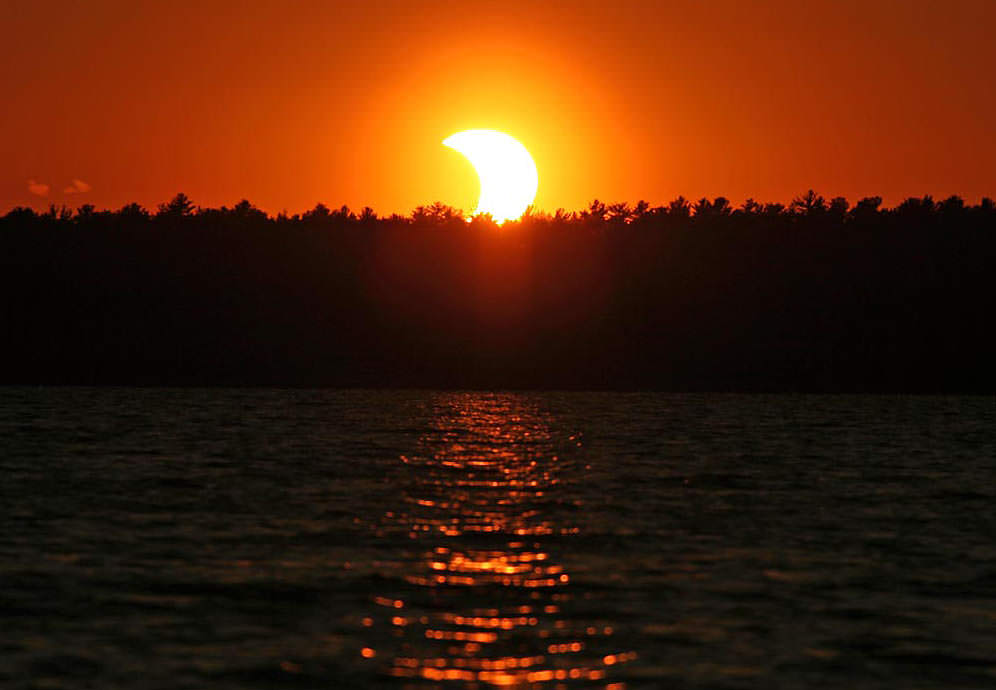2014 – a year rich in eclipses. The Moon dutifully slid into Earth’s shadow in April and October gifting us with two total lunars. Now it’s the Sun’s turn. This Thursday October 23 skywatchers across much of the North America and Mexico will witness a partial solar eclipse. From the eastern U.S. the eclipse will reach maximum around the time of sunset, making for dramatic picture-taking opportunities. Further west, the entire eclipse will occur with the sun up in the afternoon sky. Either way, you can’t go wrong.
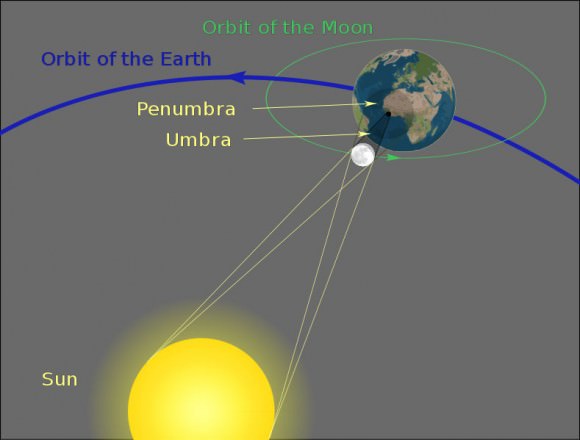
Solar eclipses occur at New Moon when the Moon passes between the Sun and the Earth and blocks the Sun from view. During a total solar eclipse, the Sun, Earth and Moon are exactly aligned and the Moon completely hides the brilliant solar disk. Partial eclipses occur when the Moon passes slight north or south of the line connecting the three bodies, leaving a slice of the Sun uncovered. For that reason, a safe solar filter is required to protect your eyes at all times. We’ll delve into that in a minute, but first let’s look at the particulars of this eclipse.
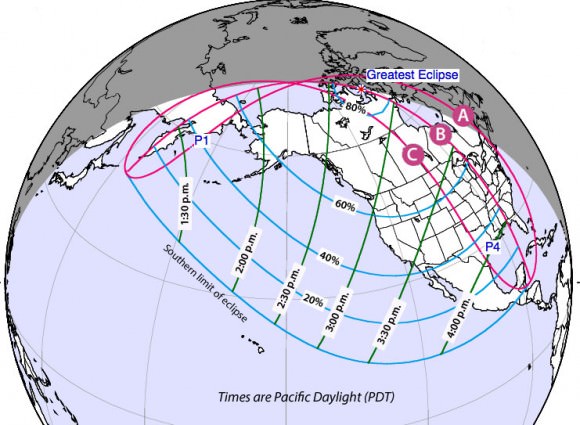
Nowhere will this eclipse be total. At best, polar bears and musk oxen in Canada’s Nunavut Territory near Prince of Wales Island will see 81% of the sun covered at sunset at maximum eclipse. Most of the rest of us will witness about half the Sun covered with the northern U.S. getting around 65% and the southern states closer to 40%. In Minneapolis, Minn. for instance, the eclipse begins at 4:23 p.m. CDT, reaches a maximum of 62% at 5:35 p.m. and continues on till sunset at 6:14 p.m. For times, coverage and other local circumstances for your town, click over to U.S. cities and cities in Canada and Mexico.
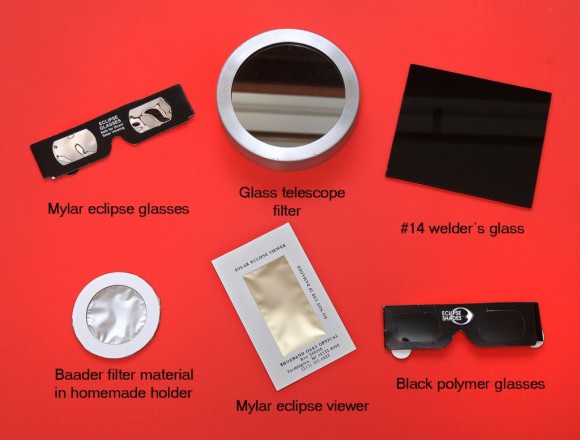
There are several ways to observe a partial eclipse safely, but they all start with this credo: Never look directly at the Sun. Dangerous ultraviolet and infrared light focused on your retinas will damage your vision for life. Nothing’s worth that risk. Happily, filters and indirect viewing methods are available. Eclipse glasses fitted with mylar or polymer lenses are a great choice. I’ve used them all but my favorite’s still the classic #14 welder’s glass because it slips in the pocket easily and takes a beating. Make sure it’s a #14, not a #13 or lower.
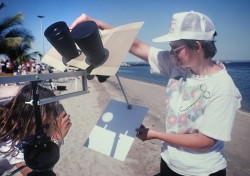
Telescopes should be outfitted with an optical mylar or aluminized glass solar filter that fits snugly over the top end of the tube. A welder’s glass gives a green solar image, mylar a blue one and black polymer a pale orange. Filters work by only allowing a fraction of the Sun’s light to reach the eye. At the end of this article I’ve listed several sites that sell a variety of safe solar filters for naked eye and telescopic use.
Easy guide to building a pinhole projector for solar eclipse viewing
Indirect methods for safe viewing include projecting the Sun’s image through a small telescope or pair of binoculars onto a sheet of white paper or cardboard. You can also build a pinhole projector shown in the video above. A box and piece of aluminum foil are all you need.
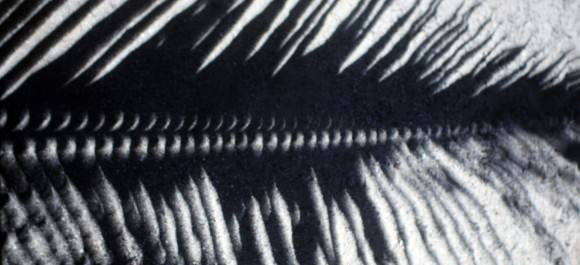
If for some reason you aren’t able to get a solar filter, all is not lost. The tiny spaces between leaves on a tree act like pinhole projectors and will cast hundreds of images of the Sun on the ground below during the eclipse. To see the effect even better, bring along a white sheet or blanket and spread it out beneath the tree. You can even cross your hands over one another at a right angle to create a pattern of small “holes” that will reveal the changing shape of the Sun as the eclipse proceeds.
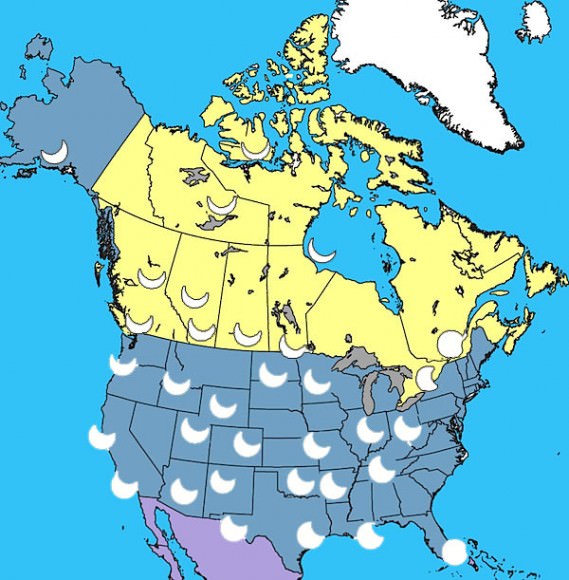
Now that you’re rockin’ to go, here are some other cool things to look for during the eclipse:
* Sunspots appear black when viewed through a filtered telescope, but they’re no match for the opaque-black Moon silhouetted against the Sun. Compare their unequal degrees of darkness. With a little luck, the giant sunspot region 2192 will provide a striking contrast with the moon plus add interest to the eclipse. This region only recently rotated onto the Sun’s front side and will be squarely in view on Thursday.
* The moon may look smooth and round to the eye, but its circumference is bumpy with crater rims and mountain peaks. Watch for these tiny teeth to bite into the solar disk as the eclipse progresses.
* From locations where half or more the Sun’s disk is covered, look around to see if you can tell the light has changed. Does it seem somehow “grayer” than normal? Is the blueness of the sky affected?
As I learned from comet discoverer and author David Levy many years ago, every eclipse involves the alignment of four bodies: Sun, Earth, Moon and you. We wish you good weather and a wonderful eclipse, but if clouds show up, you can still watch it via live stream on SLOOH.
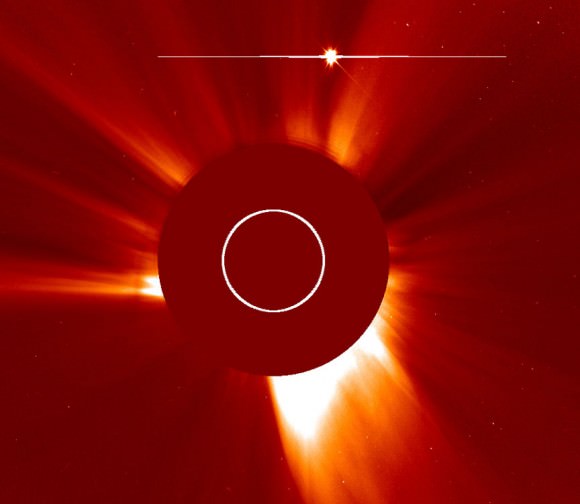
Solar filter suppliers – for a #14 welder’s glass, check your local phone book for a welding supply shop:
* Thousand Oaks Optical — Large variety of solar filters for telescopes and cameras. Sheets of black polymer available if you want to make your own.
* Rainbow Symphony — Eclipse glasses and solar viewers as well as filters for binoculars and telescopes. The basic glasses cost less than a buck apiece, but you’ll need to buy a minimum of 25 pairs.
* Opt Corp — Offers high-quality Baader mylar optical filter material to make your own.
* Orion Telescopes — Glass and mylar filters for telescopes and binoculars.
* Amazon.com – Filters for naked eye use

